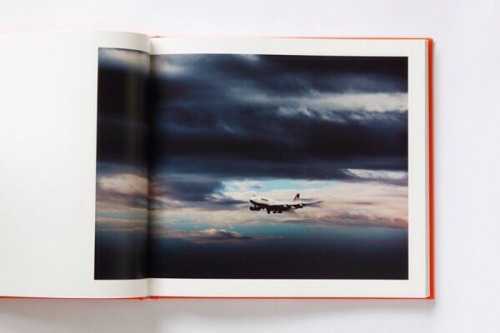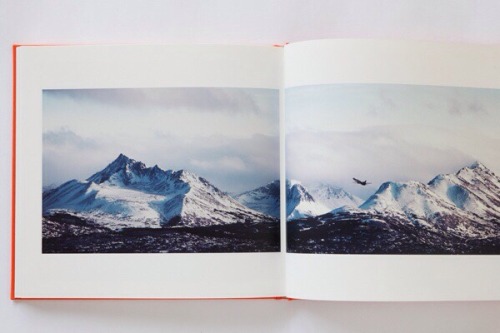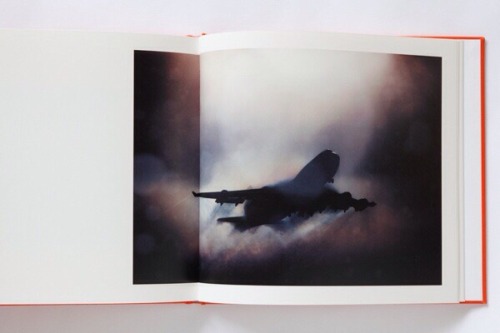migahus: My new photobook !! SHIGEYASU GUSHIMA “ANCHORAGE” 233×255㎜|96 pages|53 images|Hardcover_Clo
migahus: My new photobook !! SHIGEYASU GUSHIMA “ANCHORAGE” 233×255㎜|96 pages|53 images|Hardcover_Cloth|500 copies Published in October, 2017 Published by Migahus http://shigeyasu-gushima.com/book.html Anchorage, a city whose name literally means “a place for anchoring,” is located 3,500 miles northeast of Tokyo, in the state of Alaska. A lot of people, especially Japanese born during the Showa era (1926–1989), may feel nostalgic when hearing this city name. From the latter half of the 1950s to the early 1990s, many of the flights connecting Japan and Europe as well as the East Coast used this route which stopped over Anchorage International Airport (present day Ted Stevens Anchorage International Airport) for fueling due to its short flying range and of course because of the Cold War. For flights between Japan and Europe, it was called the Polar Route since it flew across the north pole. As a child, I discovered that aircrafts stopped at this airport located at a latitude higher than Hokkaido, without having any passengers embarking or disembarking. Countless number of travelers have gone by this remotest airport. I would fantasize a scene by flying my own aircraft made of Lego blocks over white bedding sheets likening it to snow-covered runway, and wrinkled futon cover to white mountain peaks. Soon, my imaginary landscape of Anchorage “anchored” in my mind as a place of longing. Landing lights begin to appear on the edge of the horizon between the end of the continuously drifting ice and the low hanging lead clouds. Silver glints of the approach light system on the snow-covered airport lead the aircraft to the frozen runway. The aircraft that has used up its fuel lands like sliding onto the runway. After only a brief period of repose, its heavy body is recharged with fuel, and takes off into the sky with a roaring sound as if to resist gravity. Swirling up the snow and splitting the cold air, it disappears into the clouds. Silence prevails once again on the ground, with snow dust and smell of the jet fuel remaining, but soon dispersing in darkness. Upon reaching adulthood, I depart on a journey every year in search for my inner Anchorage, flying to airports located on high latitudes—like a boat drifting to its port of anchor. What is reflected when I look down into the mirror-like icy surface of “Anchorage”? Well, it may be my former self.Anchorage, a city whose name literally means “a place for anchoring,” is located 3,500 miles northeast of Tokyo, in the state of Alaska. A lot of people, especially Japanese born during the Shōwa era (1926–1989), may feel nostalgic when hearing this city name. From the latter half of the 1950s to the early 1990s, many of the flights connecting Japan and Europe as well as the East Coast used this route which stopped over Anchorage International Airport (present day Ted Stevens Anchorage Airport) for fueling due to its short flying range and of course because of the Cold War. For flights between Japan and Europe, it was called the Polar Route since it flew across the north pole. As a child, I discovered that aircrafts stopped at this airport located at a latitude higher than Hokkaido, without having any passengers embarking or disembarking. Countless number of travelers have gone by this remotest airport. I would fantasize a scene by flying my own aircraft made of Lego blocks over white bedding sheets likening it to snow-covered runway, and wrinkled futon cover to white mountain peaks. Soon, my imaginary landscape of Anchorage “anchored” in my mind as a place of longing. Landing lights begin to appear on the edge of the horizon between the end of the continuously drifting ice and the low hanging lead clouds. Silver glints of the approach light system on the snow-covered airport lead the aircraft to the frozen runway. The aircraft that has used up its fuel lands like sliding onto the runway. After only a brief period of repose, its heavy body is recharged with fuel, and takes off into the sky with a roaring sound as if to resist gravity. Swirling up the snow and splitting the cold air, it disappears into the clouds. Silence prevails once again on the ground, with snow dust and smell of the jet fuel remaining, but soon dispersing in darkness. Upon reaching adulthood, I depart on a journey every year in search for my inner Anchorage, flying to airports located on high latitudes—like a boat drifting to its port of anchor. What is reflected when I look down into the mirror-like icy surface of “Anchorage”? Well, it may be my former self. -- source link




